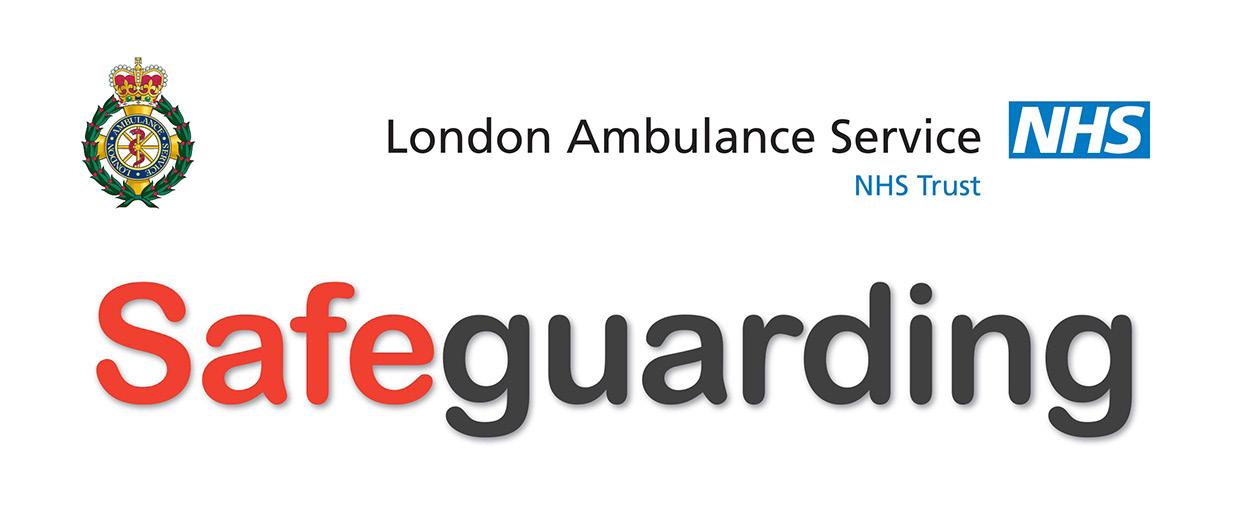

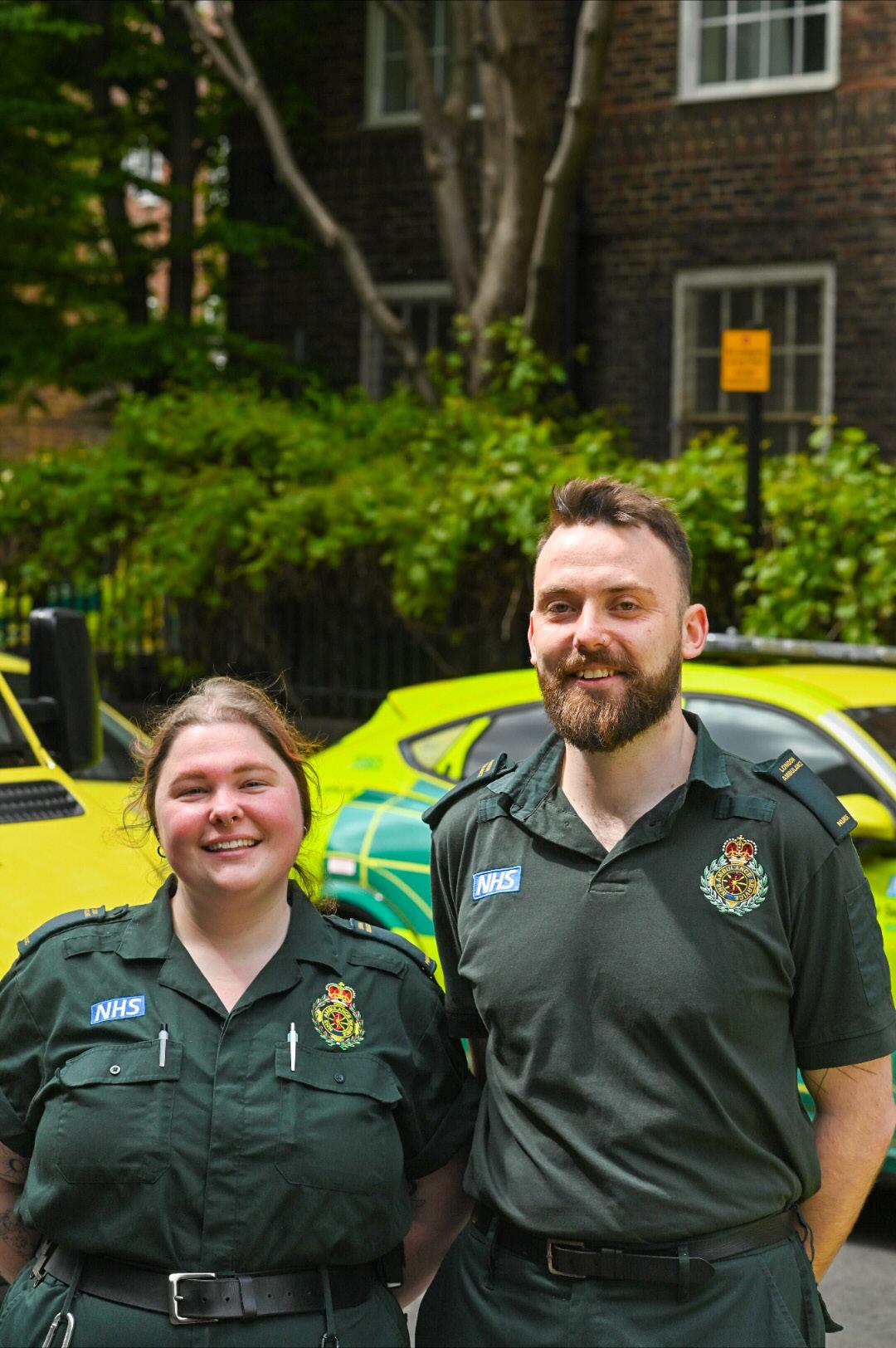




In 2023-24 the London Ambulance service NHS Trust (LAS) has continued to ensure the safeguarding of children and adults at risk across London including taking part in preventative safeguarding initiatives and making referrals for care concerns, safeguarding children at risk and safeguarding adults at risk.
We answer more 999 and 111 calls than any other ambulance service in the country. We attend more than 3,000 emergencies a day. We are the only NHS provider trust to serve the whole of London – one of the world’s most dynamic and diverse cities. Demand for our services increases most years as do the challenges and complexities of ensuring we safeguard those at risk.
We have a substantive headcount of over 8,000 staff but with contractors and volunteers, there are circa 10,000 people working for us and together we are striving to be a world-class ambulance service for a worldclass city.
Our core work:
• Answer, prioritise and allocate 999 calls across London
• Respond to emergency and urgent 999 calls by sending clinicians to the scene or by treating over the phone
• Provide 111 integrated urgent care services for millions of people in south east, north east and north west London
• Take patients referred by a Community Healthcare Professional to hospital for emergency assessment.
In all of this work ensuring the safety of and safeguarding the people we have contact with is a key priority.
The Safeguarding Team has worked hard to support operations and other departments during the ongoing pressures on the Trust whilst maintaining the safeguarding functions. This has been achieved by amending working practices, whilst continuing to monitor, review, promote and raise the standard of safeguarding practice across the Trust. By being adaptable, present and accessible this has enabled us to increase the profile of safeguarding and the team both internally and externally during 2023/24.
This report provides evidence of the Trusts commitment to effective safeguarding processes and procedures. The report details the achievements and learning as well as the structure and assurance measures in place to ensure compliance with the Care Quality Commission, & Ofsted Key Lines of Enquiry, the Children Act 1989/2004,
the Care Act 2014 and the NHS contract requirements.
The Trust has 64 Safeguarding Boards/ partnerships it engages with. Whilst it is not possible for the Trust to attend all Boards we do support local Strategy and Joint Agency Review meetings and provide information to support the work of the Boards. The Trust has Brent ICS and safeguarding Children Partnership and Adult Board as its lead Safeguarding partner. Scrutiny of the Trusts practice is assured through Brent. Reports and audits provided for Brent are also available to other boards across London.
THE TRUST WOULD LIKE TO THANK ALL STAFF WHO HAVE PLAYED A PART IN PROTECTING CHILDREN AND ADULTS AT RISK THROUGHOUT THIS YEAR.

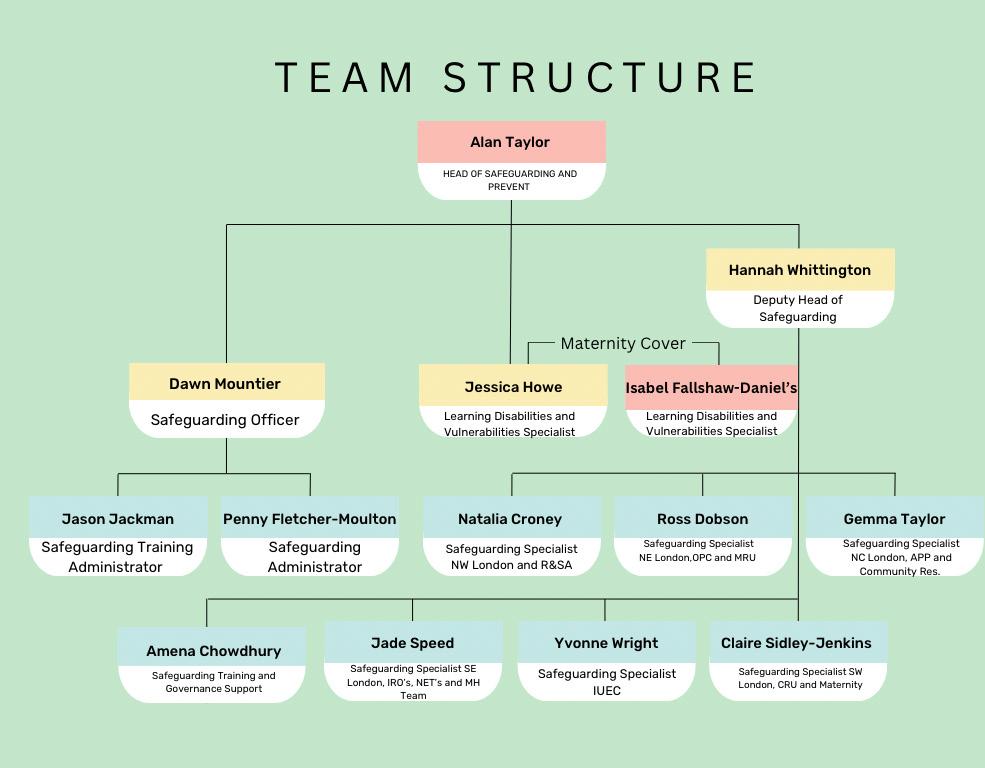


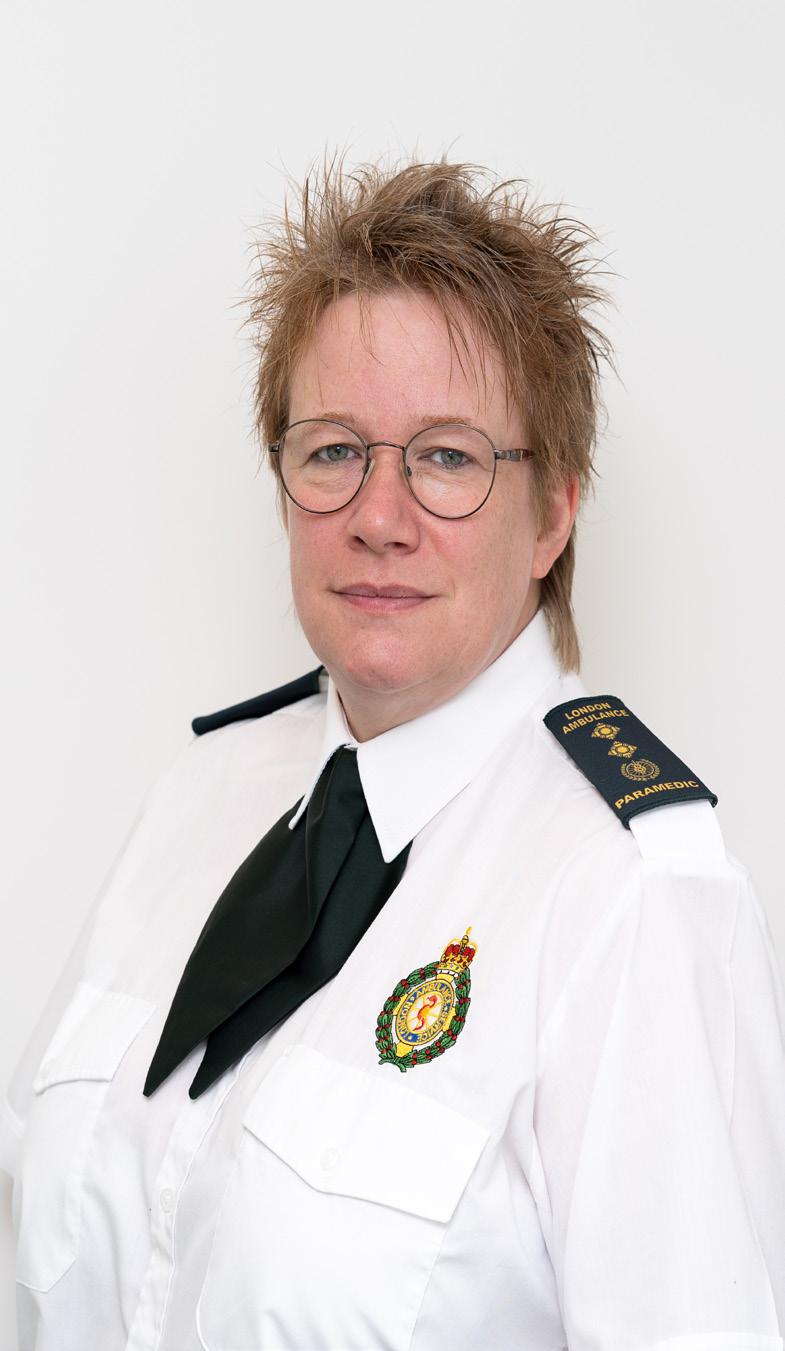

The Safeguarding Team are responsible for all the Trust safeguarding processes and functions, providing expert, evidence based clinical leadership on all aspects of the safeguarding agenda. The team has a responsibility for ensuring the development and implementation of systems and processes across all areas of the Trust, working with partner agencies in line with local and national standards and legislation. Delivering safeguarding training and education and raising the standard of safeguarding concerns/referrals.
The team ensures the implementation of appropriate CQC core standards and other relevant external targets including standards contributing to national and local inspections and assessments of safeguarding arrangements.
The team provides information and support to partner agencies for example in undertaking safeguarding investigations, Serious Case Reviews (SCR) now known as Local Child Safeguarding Practice Reviews (LCSPR), Safeguarding Adult Reviews (SAR), Care Proceedings, Child Death Overview Panels (CDOP’s), Section 42 enquiries, Domestic Homicide Reviews (DHR), Multi –Agency Safeguarding Hub enquiries (MASH) and Multi-Agency Risk Assessment Conference’s (MARAC).
The Emergency Bed Service (EBS) managed by Alan Hay, processes all safeguarding concerns from staff and sends to the relevant local authority or partners. They have a close working relationship with the Safeguarding Team.
LEFT TO RIGHT:
Alan Taylor, Head of Safeguarding and Prevent. Pauline Cranmer, Chief Paramedic & Quality Officer and Director Lead for Safeguarding. Dr Mark Spencer, Non-Exectutive Director (NED) for Quality inc. Safeguarding

The team have had another busy and productive year, with several successes we would like to share with you:
• We were pleased to hold our annual conference again this year at The Oval. This years theme was ‘HAVE YOU SEEN ME?’’. We had speakers from professionals who were experts in their field, alongside those sharing their valuable lived experinces to our attendees.
• Our team continued to produce our quarterly safeguarding newsletters. These publications share updates in safeguarding practice and offers an opportunity for us to share best practice and case studies to support our staffs safeguarding practice and build on their knowledge.
• 2023-24 saw the Trusts ongoing commitment to our zero tollerance to safeguarding allegations and sexual safety increase in focus and visibility. This included the development of our sexual safety risk assessment, as well as the production of our SEXUAL SAFETY and DOMESTIC ABUSE TOOLKITS.

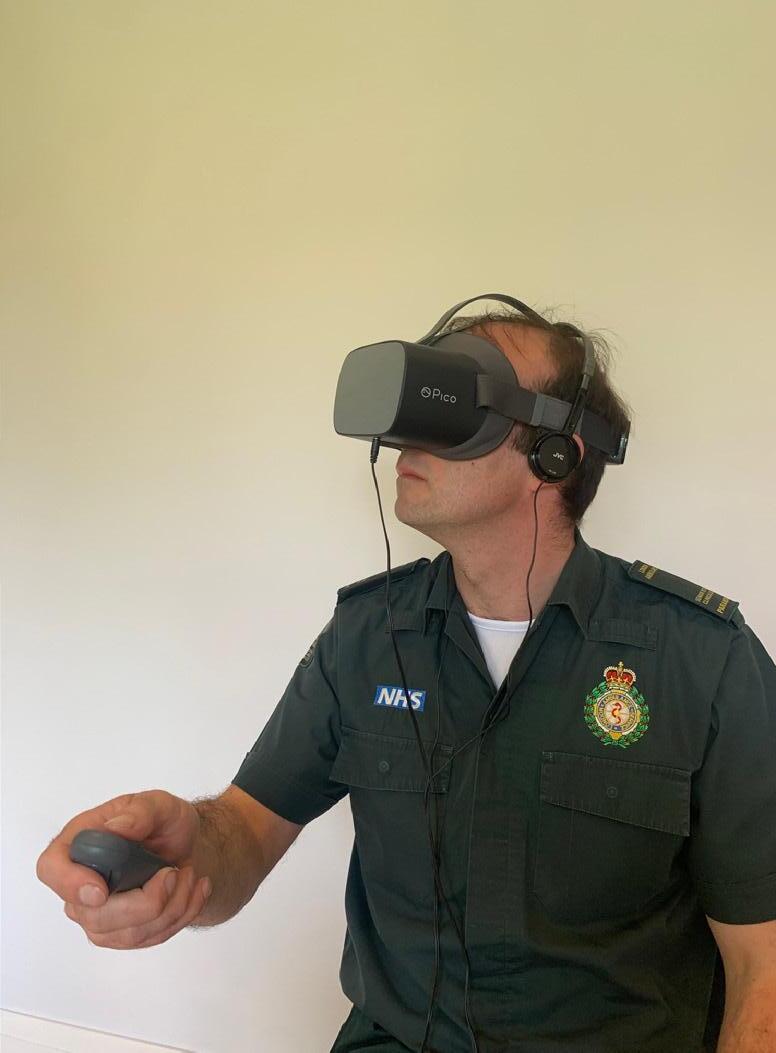
• In the last year we have updated and launched our new L2 and L3 training packages that are delivered face to face via MS Teams. The new packages focus on Trust learning and case studies to inform knowledge and improve practice.
• We have continued to recognise the great work of our colleagues by awarding 66 SAFEGUARDING BADGES that acknowledge great practice in safeguarding children and adults at risk.
• We used the metaverse to support our training, through the use of VIRTUAL REALITY GOGGLES. They provided an immersive training experience, which enabled our staff to walk in the shoes of children who were victims of exploitation and contextual safeguarding issues.
• Launching THE OLIVER MCGOWAN MANDATORY TRAINING ON LEARNING DISABILITY AND AUTISM and the new CSR for LEARNING DISABILITIES AND AUTISM. This continues the ongoing work of the Learning Disabilities and Vulnerabilities Specialist to improve the health outcomes for this patient group within LAS and our partners.
• Moved closer towards an electronic solution to our referral processes. The aim of this change is to enable our staff to make first hand referrals direct to our statutory partners. This will be launched in 2024/25.
Risk 1170 referrals delayed or not made due to delay in calls being answered due to high volume, staffing and Avaya issues
Risk 1276 unrestricted access on LAS mobile devices
Risk 1448 lack of resource for child frequent callers
Safeguarding Annual Report
Safeguarding Health Outcomes Framework (SHOF)
Safeguarding Adults Risk Assessment Tool (SARAT)
Quality reports incl. sector reports
Safeguarding Assurance Group (SAG)
Quality Oversight Group (QOG)
Quality Assurance Group (QAG
Trust Board
AUDITS
Welfare Referrals Audit
Training Audit
LA456 Audit
Safeguarding Children and Young People Policy TP018
Safegaurding Adults at Risk (incl. Welfare referrals) TP019
Domestic Abuse Policy TP119
Prevent Policy TP108
Chaperone Policy TP118
Throughout the year as a team we have continued to enage with our external partners and assist in requests for information as well as contributing to statutory reviews. We would like to take this opportunity to thank our internal partners for all their work in support the work of the team, in particual our Senior Sector Clinical Leads who suport our work in relation to child death reviews through their clincal reviews.
2023/24 has seen a significant increase in the number of request we have seen from our stautory partners for information and engaement in statutory reviews compared to the previous year. IN
In 2023/24 we attened 147 Joint Agency Review (JAR’s), this is an icrease from the previous year which was 144. These meetings are attending by out Safeguarding Sector Specialists and we attend reviews for any child we have made Verification of Fact of Death (VOFD) on scene or attended the call prior to their death. On review of our documnetation, the two most common modes of death recorded on LAS paperwork were UNKNOWN/ FOUND NOT BREATHING or MEDICAL CONDITION.
UNKNOWN/FOUND NOT BREATHING
AS IN PREVIOUS YEARS
WE ATTENDED MORE MALES DEATHS THAN FEMALE

In 2023/24 we contributed and atteneded 47 Safegaurding Adult reviews. This is an increase of 10 from last year where we recieved 37 requests.
From these 47 reviews, LAS specific recommendations included missed opportunities to refer and recognises safegaurding for adults at risk, recognition of self-neglect in its multple presentations and associated risk, lack of professional curiosity and unconcious bias being a theme.
Following internal review we recognise we can improve awarness in relation to adult mental health and safegaurding, as well as recognising safegaurding concerns for those who are experiencing homelessness, miuse substances, with an aim to continue to encourage a trauma informed approach as per last years focus.
TOTAL FOR 2023/24 WE ATTENDED 14 DOMESTIC HOMICIDE
In total we attended 14 Domestic Homicide Reviews across the London boroughs, this is a decrease from last year, where we attened 23. This could be explained due to the back log seen in 22/23 due to the Covid pandemmic which significantly distrupted stautory reviews.
From these 14 reviews we had no LAS specific recommendations for ourselves as a Trust from the published reports. Following internal review, we did recognises the need to improve our recognition of domestic abuse and our response to these incidents.
As a service we are looking to improve our domestic abuse practice and are working with external partner agencies to seek their expertise and advice on this.

IN 2023/34 OF THE 32 LONDON BOROUGH’S THROUGH STATUTORY REVIEWS (JAR’S. SAR’S, SPR AND DHR’S) WE HAVE BEEN ASKED TO ENGAGE WITH 28 OF THESE BOROUGHS
LAS is a learning organisation and the safeguarding team take pride in engaging in learning and ensuring this is disseminated across the trust. Safeguarding learning is indentified through many sources:
• Internal reviews - these origninate from incident reviews, missed opportunities etc
• Extrenal statutory reviews (SPR, JAR, RAPID REVIEW, SAR, DHR)
• External agency flagging missed opportunities or requests for further information
• Internal audit
For a number of years the safeguarding team have maintained a learning log to keep track of learning identifed from the above and to keep a record of the actions taken to meet the learning. Internally we also feed into learning via the Learning and Assurance Group which we report into.
INAPPROPRIATE WELFARE REFERRALS WHERE SAFEGUARDING CRITERIA MET
RECOGNISING SELF-NEGLECT IN ITS MANY FORMS AND PRESENTATIONS
MISSED REFERRALS FOR CHILD MENTAL HEALTH -SELF-HARM/ SUICIDAL IDEATION/INTENT
RECOGNISING THE ADDITIONAL RISKS FOR LOOKED AFTER CHILDREN
MENTAL CAPACITY- LACK OF FORMAL CAPACITY ASSESSMENTS
LEARNING TO USE
PROFESSIONAL CURIOSITY TO ASSESS SAFEGAURDING RISK
PROFESSIONAL RESPONSIBILITY TO COMPLETE A SAFEGUARDING REFERRAL WHEN OTHER PROFESSIONALS INVOLVED







• INDIVIDUAL LEARNING VIA LA456
• NEWSLETTER ARTICLE
• E-LEARNING LEVEL 2&3
• EOC & IUC PROMPT SHEET
• INDIVIDUAL LEARNING VIA LA456
• E -LEARNING LEVEL 2&3
• CONFERENCE SPEAKER
• SECTOR BASED CASE STUDIES
• INDIVIDUAL LEARNING VIA LA456
• LEVEL 2&3 INTERACTIVE CASE
• NEWSLETTER
• INDIVIDUAL LEARNING VIA LA456
• LEVEL 2&3 INTERACTIVE CASE
• SECTOR BASED CASE STUDIES
• INDIVIDUAL LEARNING VIA LA456
• LEVEL 2&3 INTERACTIVE CASE
• SHARING LEARNING WITH LAS MCA LEAD
• INDIVIDUAL LEARNING VIA LA456
• LEVEL 2&3 THINK FAMILY APPROACH
• SECTOR BASED CASE STUDY
• INDIVIDUAL LEARNING VIA LA456
• E-LEARNING LEVEL 2&3
• SECTOR BASED CASE STUDY

The total number of safeguarding referrals/concerns raised by LAS during 2023/24 was 42,750.
Comparison with 2023/24:
• 30% increase in safeguarding referrals/concern raised on 2022/23’s total of 33,002
• 32% increase in child safeguarding referrals since 2022/23
• 33% increase in adult safeguarding concerns since 2022/23
• 24% increase in adult welfare concerns since 2022.23
This is a steeper increase than seen in previous years. There has been no very significant change to internal processes this year; indications are that this increase is happening across health and social care with service partners in e.g. Local Authorities reporting similar increases.
The share of child concerns associated with mental health and self-harm is notable - 32% of child referrals. This rose from around 25% during the pandemic and has remained high since.
A further 1,076 concerns categorised as ‘other outcome’ were not passed to the local authority - just 2.5% of the overall total.
The majority of these were either mental health referrals with no safeguarding aspect, welfare concerns where the person or a carer was advised to refer, or cases where we could not proceed because the person did not consent.
All these ‘other outcome’ referrals are reviewed by a safeguarding specialist, and information is shared where appropriate with other agencies.
32% of Child Referrals had a Mental Health & SelfHarm as main concern
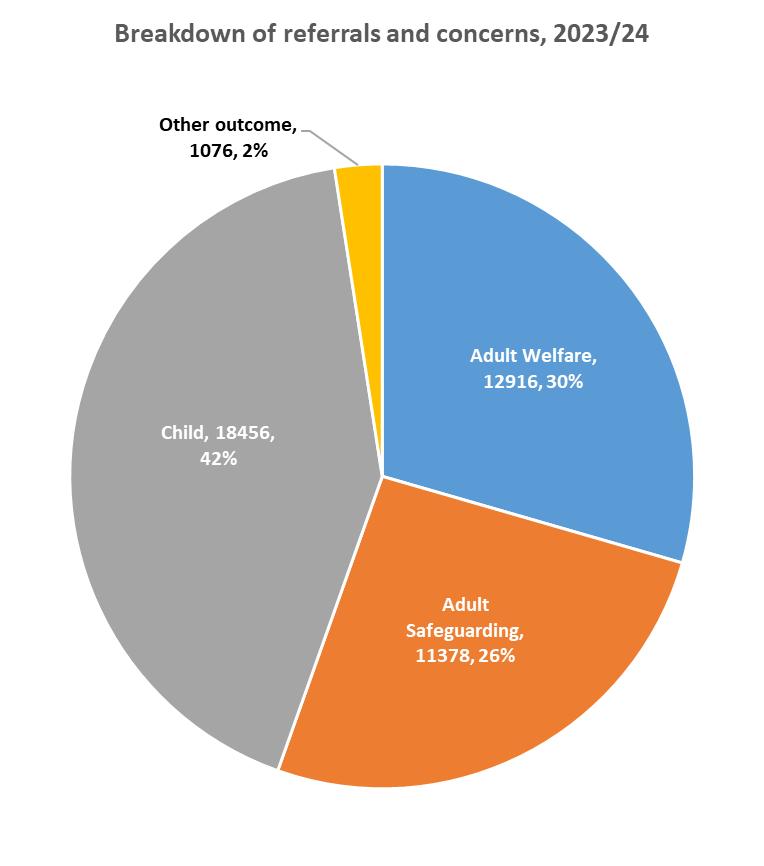
42,750 referral’s made in 2023/24 in comparisson to 2022/23, this is a;

30% increase in overall referrals
32% increase in child safeguarding referrals
33% increase in adult safeguarding referrals
24% increase in adult welfare referrals
This chart shows how many referrals were made from each part of the trust.
71% of referrals are made by crews working with sector-based call signs, with a further 7% coming from other road staff – specialist responders like our Mental Health and Falls cars, private providers, tactical responders, training, etc.
A further 15% were made by colleagues working in our control rooms – 12% from call handlers and 3% from our Clinical Hub.
5% of referrals were made by clinicians and call handlers working our 111/IUC call centres.
A small number, 1%, came from non-sector frontline resources (Urgent Care, Special Events, Hazardous Area Response Team etc)


OF LONDON is the borough we refered into the LEAST in 2023/24, this is the same as in 2022/24
CROYDON is the borough we refered into the MOST in 2023/24, this is the same as in 2022/24
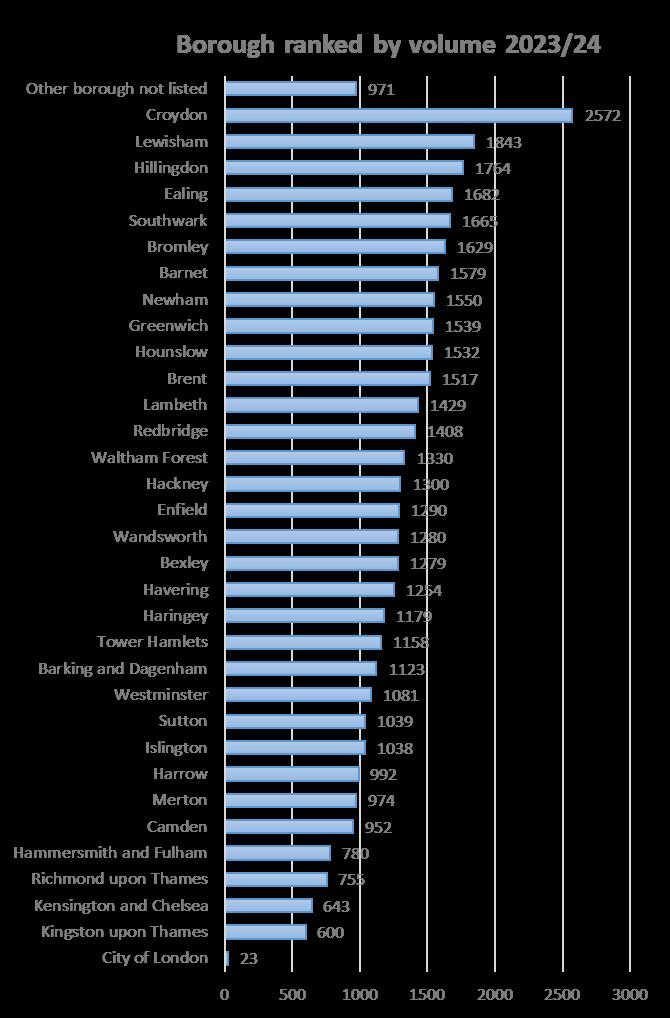
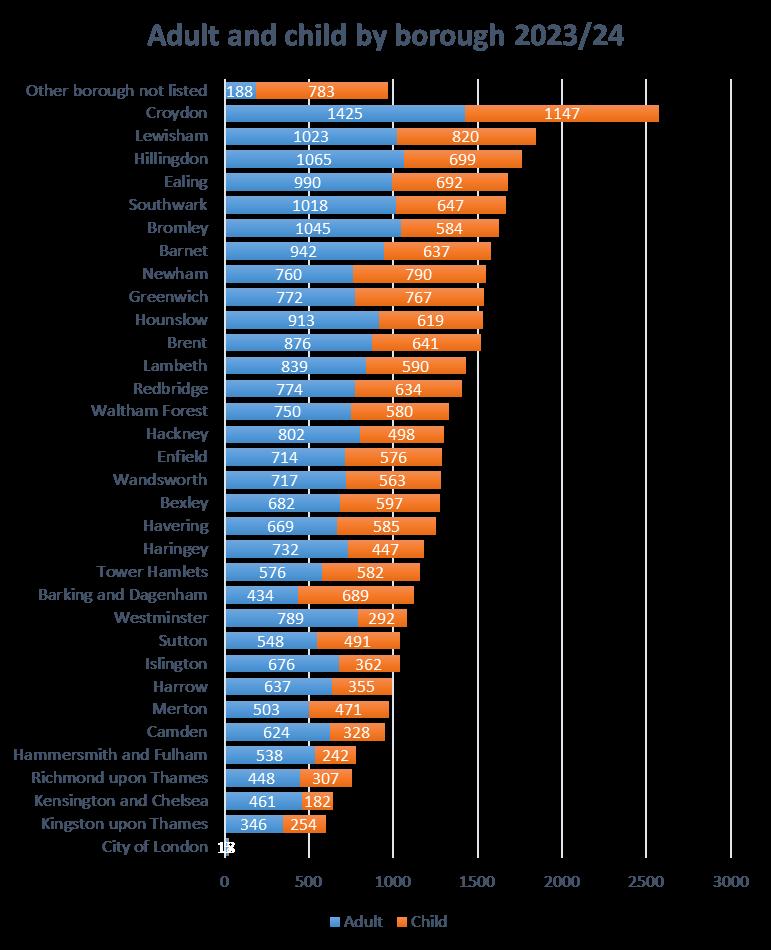

The 12 concerns relating to FGM did not include any cases of directly observed or disclosed FGM of a child. These were concerns relating to children whose mothers or adult siblings had FGM, or other indirect concerns stemming from medical records etc. No mandatory reports were made to the police.
For some of our ‘possible gang involvement’ referrals, where the child is conveyed to a Major Trauma Centre, we also refer immediately to Red Thread, a third sector youth organisation who work to intervene in young people’s lives to steer them away from harmful social environments and behaviours. This year, 170 of these referrals have been made: 10 more than last year.
18,456 child referrals made in 2023/24 Top 3 referral categories for children 2023/34
This chart shows the categories of concern the Trust recorded. Multiple referral categories can be selected for an individual referral.
Mental health, self-harm and suicidality are the highest category accounting for just under a third of all children for whom concerns were raised – this and Parental Mental health and Parental Capacity have been the top three child safeguarding concerns identified by staff for many years.
The share of MH concerns increased during the pandemic from about a quarter to a third of concerns raised. That rise has stabilised recently and this year has risen in line with overall baseline increase.
The chart for adult safeguarding concerns shows self- neglect as one of the top reasons for raising the concern. Multiple categories can be selected for an individual referral.
For those referrals where relatively severe hoarding is indicated (scored using a clutter index devised by the LFB as over 4), and where consent is given, an alert is shared with the LFB. We also raise referrals where there is no specific mention of hoarding, but there is an overriding concern of fire risk to a vulnerable person. We made 1,810 of these referrals this year.
In Domestic Abuse cases, staff supply the victim with the telephone number of the Women’s Aid Domestic Violence Helpline number. On rare occasions the victim will ask staff to contract the DVHL on behalf of the person concerned.
Self Neglect
Neglect
11,378 adult safeguarding referrals made in 2023/24
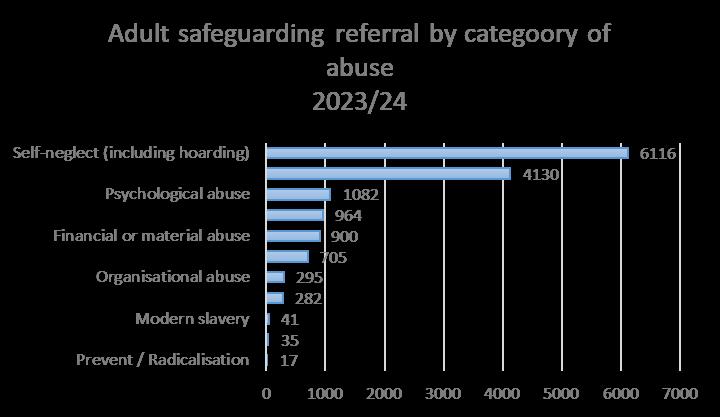
For welfare related concerns, crews are encouraged where possible to empower individuals or their families or carers to approach the local authority directly.
Where concerns are raised via the Trust reporting the main reason of concern is for a care assessment. Most welfare referrals indicate several possible areas of concern, so the total of concerns expressed is much more than the total of referrals.

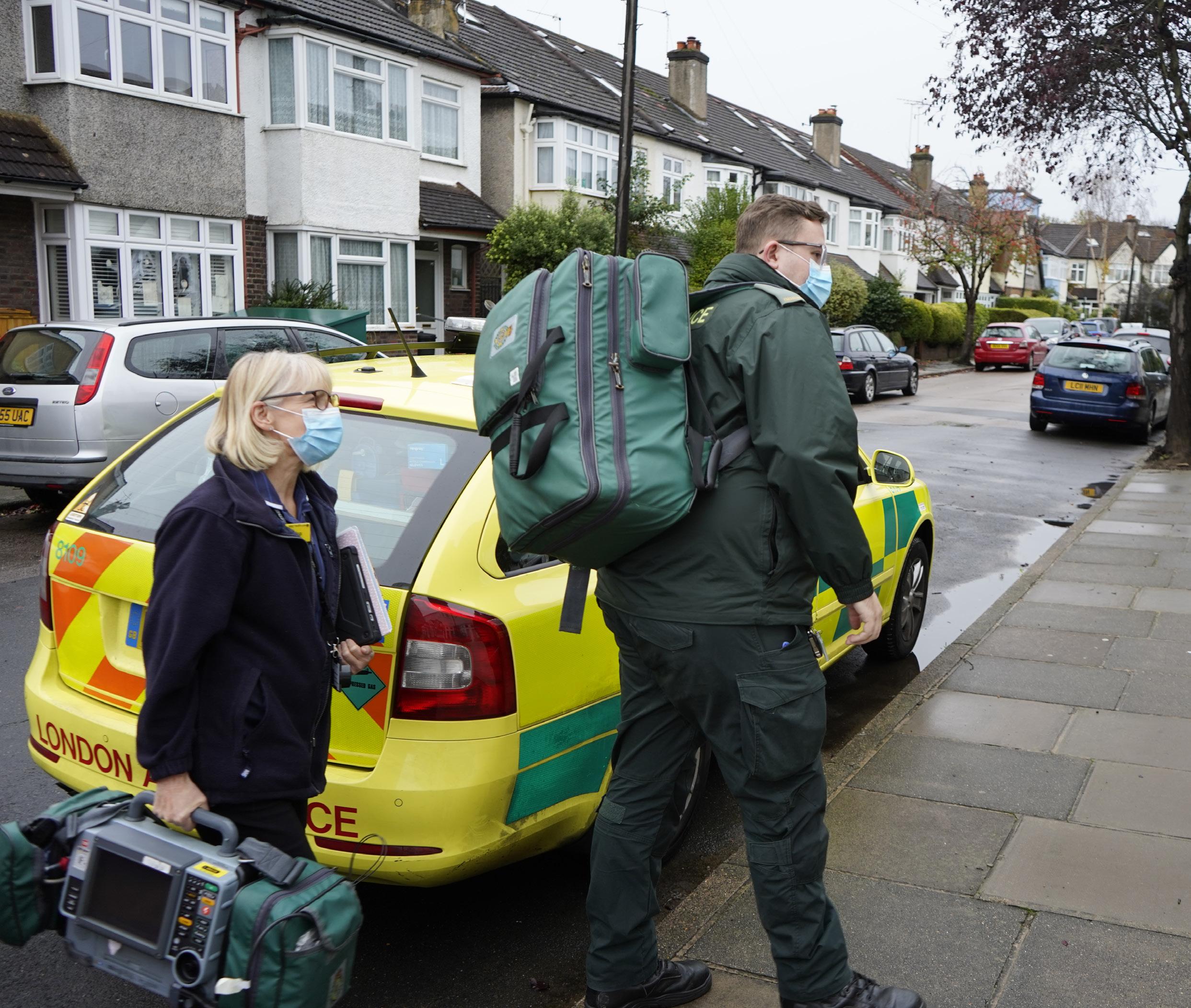
Top 3 premises we attend and refer
• Own home
• Public place
• Other


56% of referrals have NO ETHNICITY recorded
As in previous years we referred MORE FEMALES than males

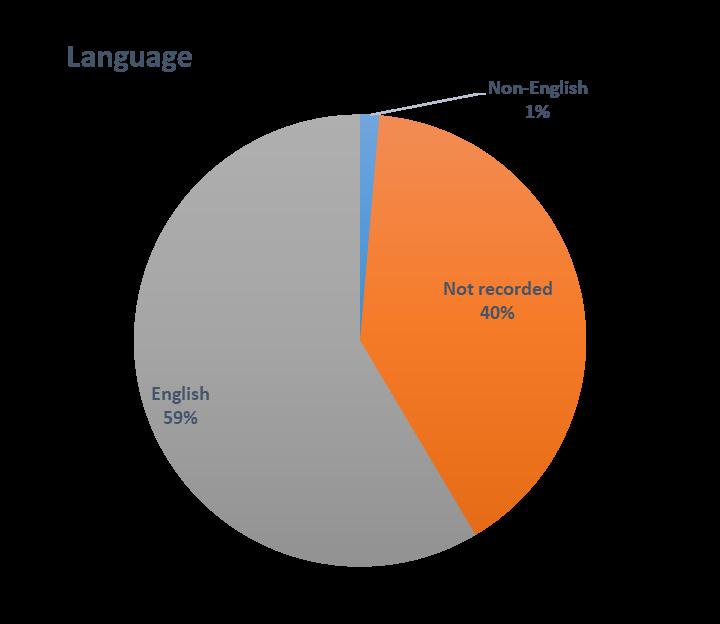
Fewer than 1% of referrals have religion recorded
ARABIC is the second highest recorded language after ENGLISH

Integrated Urgent Care (IUC) and our Safeguarding Specialist for Integrated Urgent Care and Emergency Operations Centre, regularly undertake end to end audits. The aim of these audits are to understand the journey of the patient through the IUC system and to identify areas of improvment and good practice in relation to the assessment and referral of safeguarding concerns.
This audit was undertaken in 2023/24 and identified good pratice in relation to a Domestic Abuse incident of an adult and recognition of the concerns for her child.
25 year old female made a call to our North West London IUC. The patient reported that she had been attacked a few days before by her partner, during this assualt she had been strangled/held in a chokehold. They also disclosed that they had been strangeled previously by the same individual, as well as being a victim of sexual assault.
Police were at the scene at the time of the incident but she had declined an ambulance as she reports she was confused at the time and felt she was ok. Now reporting that she is feeling dizzy, blurred vision and pain at the back of her neck.
Due to the seriousness of the assualt and presenting symptoms an ambulance was dispatched to the patient.
As well as recognising the medical need for the patient following the incident and acting on this appropriatley, the call handler also appropriatley explored the safeguarding concerns related to this incident. They showed empathy and paced the call well to allow the patient to talk about her experience and the impact that this was having, During the call they identified that the police had been involved at the original incident and that she also had a child who lived with her.
The call taker explored safeguarding for her child with the patient, providing information and advice to enbale her to make an informed decision about her child being a part of the safeguarding process. Although consent was not required in ths instance, the mother did agree to the referral.
Crew arrived and there was some concern that the partner had returned to scene. Police requested for the safety of the patient and the child. Crew also explored safeguarding and a further referral for the child was sent from this interaction to go alongside the IUC referral.
MEDICAL ISSUES AND SAFEGUARDING CONCERNS
IDENTIFIED EARLY ON IN THE CALL
CALL HANDLER SHOWED EMPATHY AND PACED THE CALL TO ALLOW THE
PATIENT THE TIME AND SAFE SPACE TO TALK ABOUT HER EXPERIENCE OF ASSUALT
SAFEGUARDING DISCUSSED WITH THE PATIENT FOR HER CHILD SO THAT THEY COULD BE SUPPORTED IN RELATION TO DOMESTIC ABUSE RISK
REFRERRALS BY BOTH INTEGRATED URGENT CARE AND AMBULANCE CREW RESULTED IN THE FAMILY BEING REOPENED TO SOCIAL CARE
LAS ISSUED A BULLETIN REGARDING NON-FATAL
STRANGUALTION AWARENESS AND STAFF INVOLVED IN CASE WERE ISSUED SAFEGUARDING BADGES FOR GREAT SAFEGUARDING PRACTICE
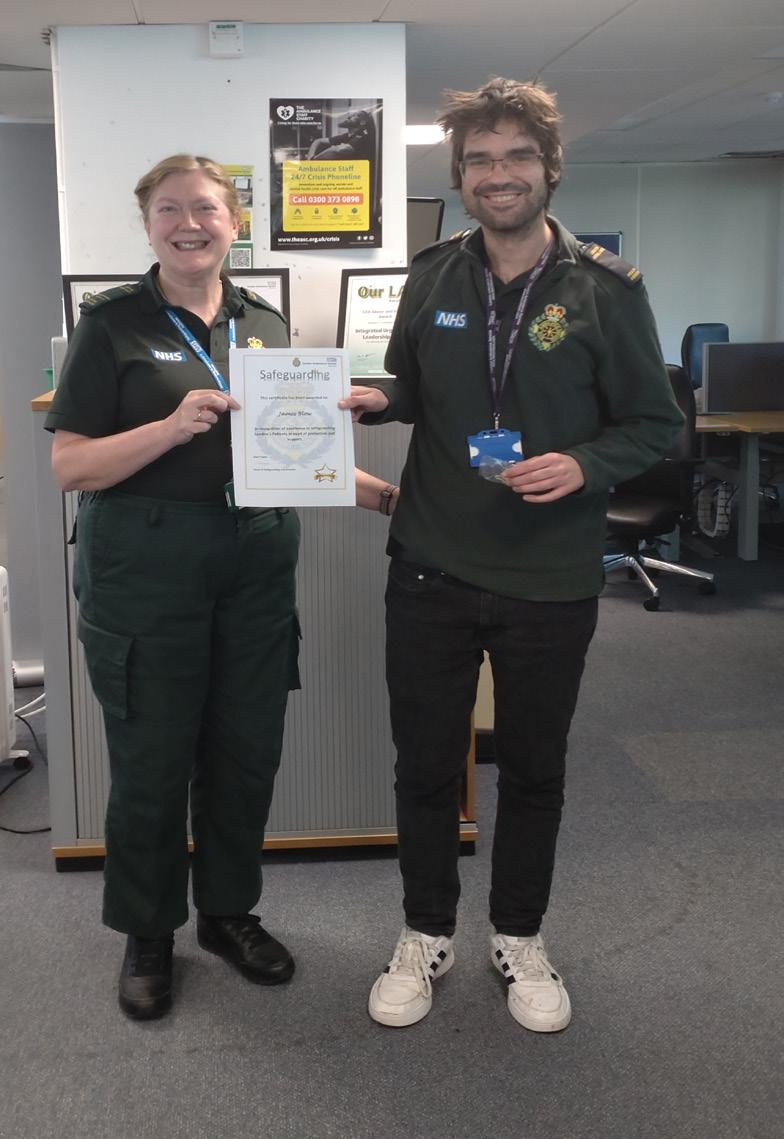
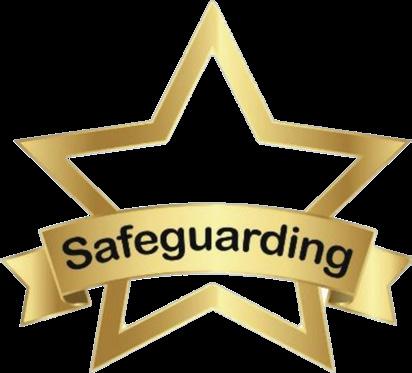
THE LAS SAFEGUARDING THE WORK OF OUR DEMONSTRATE EXCELLENT PRACTICE. THROUGHOUT HANDED OUT
CERTIFICATES AND BADGES THIS GREAT

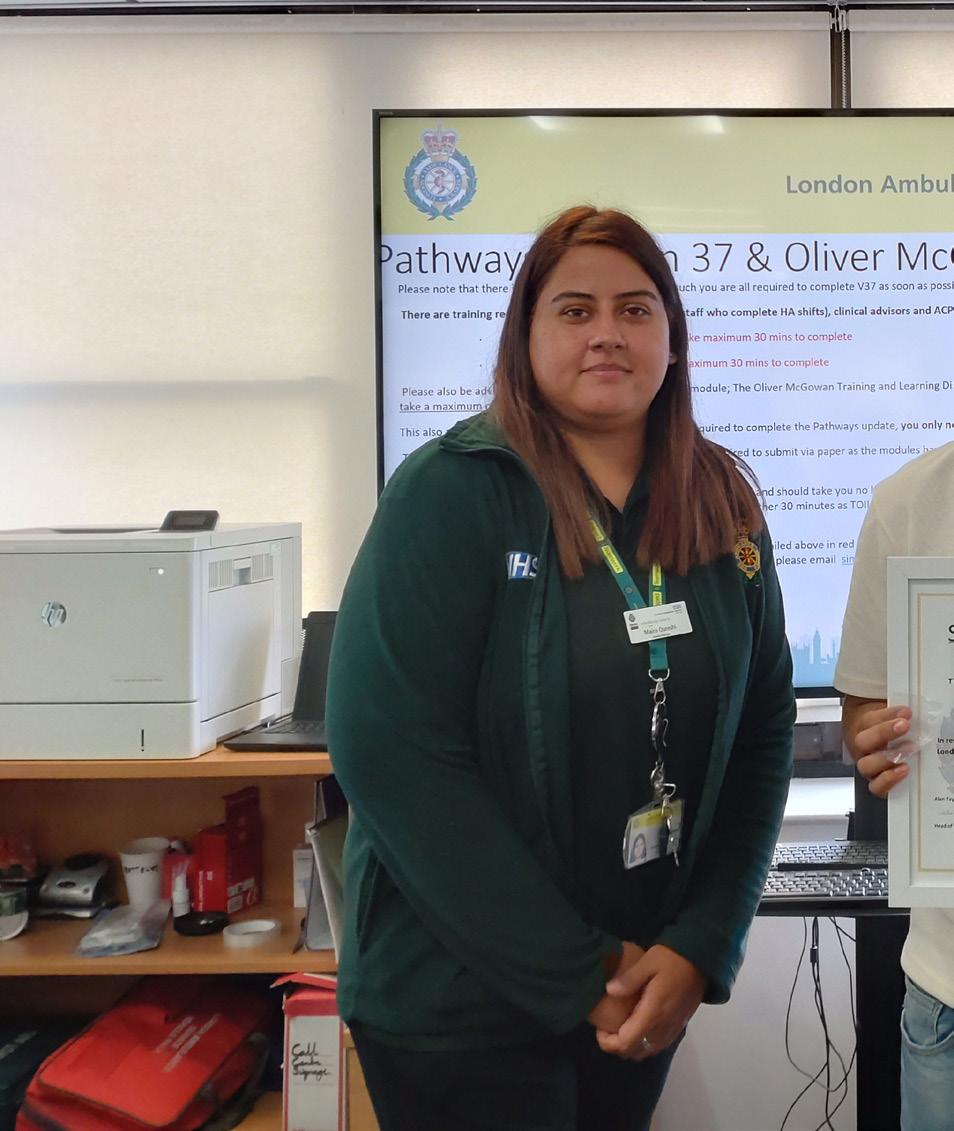

SAFEGUARDING TEAM RECOGNISE
COLLEAGUES WHO EXCELLENT SAFEGUARDING
THROUGHOUT THE YEAR WE
A TOTAL OF 66 BADGES TO ACKNOWLEDGE GREAT WORK!



As part of the Safeguarding Specialsit role, the regularly review incidents where safeguarding concerns have been identified or where on occassion safegaurding concerns have been missed. The aim of the reviews are to identify areas for improvement, as well as recognising good practice that has ensured the safety of a child or an adult at risk.
Our 999 Emergency Operations Centre recieved a call in relation to 5 month old with a recent history of being generally unwell.
On arrival, the patient was being held by their Mother. Their Father was also reported to be present on scene along with their older sibling.
The history given was that the patient had been unwell with a viral illness a week ago and had seen the GP who had provided self-care advice.
On the day, Mum stated that the patient had not been hungry and when she changed their nappy, she noticed what looked like some bruising on both axillae. Mum reported that the patient’s cousin had a similar presentation of ‘bruising’ on his chest area when he had meningitis 2-3 months ago.
5 month old ‘Viral illness’ Not eating Non-mobile Bruising to both axillae
Joint working with hospital
The DCA and FRU conveyed the child to hospital, and, following a conversation with nursing staff about the findings on scene, it was agreed that they would complete a safeguarding referral.
The Crew reported that the child appeared ‘clinically well’ and the home environment was well maintained and family seemed ‘caring and dedicated’.
The crews stated that the referral was raised very much as a precaution due to the patient’s age, presentation and vulnerability.
• Clinical examination concluded injuries/bruising was non-accidental
• Emergency Protection Order was applied for and granted for the 5 month old and their older sibling
• Parents were arrested and investigation is ongoing
IMPORTANCE OF PROFESSIONAL CURIOSITY IN THE CASES ON INJURIES IN NON-MOBILE CHILDREN
THINK FAMILY APPROACH - CREW CONSIDERED ALL INDIVIDUALS ON SCENE, IDENTIFYING A SIBLING WHO WAS ALSO INCLDUED IN THEIR REFERRAL TO SOCIAL CARE
JOINT WORKING WITH THE HOSPITAL ON HANDOVER, CONCERNS DISCUSSED WITH THE MDT AND ACTIONS AGREED BASED ON SAFEGUARDING CONCERNS
CONVEYANCE AND REFERRAL RESULTED IN FURTHER INVESTIGATION, BASED ON THIS INFORMATION, CHILDREN SAFETY NETTED VIA AN EMERGENCY PROTECTION ORDER
GREAT PRACTCICE ACKNOWLEDGED THROUGH THE AWARDING OF A SAFEGUARDING BADGE TO THE ATTENDING CREW
The work of the Learning Disabilities and Vulnerabilities Specialist has been focussing on aligning our work plan to both our Learning Disability and Autism Strategies
In the financial year of 2023/24 there were 22,143 attendances to people with a learning disability and/or autistic people.
22,143 recorded attendances to ppl with a Learning Disability and/or autistic people
The Learning Disabilities and Vulnerabilities Specialist has been working to increase engagement with people with lived experience this year through a variety of methods. As stated in both our Learning Disability and our Autism Strategies, there are barriers for patients to access good quality healthcare. We have aimed to recognise and reduce these barriers through engaging meaningfully with those who use our service. Some of the ways this has been done this year, include: The introduction of Learning Disability and Autism advice and accessible resources into the Patient Care Handbook
This year, extensive work has been put into ensuring that advice and best practice guidance around Learning Disabilities and Autism is available for front-line crew.
In July 2023, topics covering the following were included into the Patient Care Handbook:
• Communication Adaptations
• Assessing Pain
• Clinical Considerations and Signs of Deterioration
• Reasonable Adjustments to standard practice
• Supporting Conveyance
• Supporting Mental Capacity Assessments
Last year, the Learning Disabilities and Vulnerabilities specialist created a series of accessible resources with the aim of reducing anxiety and increasing understanding for patients. In order to do this, she liaised with learning disability and autism providers, asking experts with lived experience what they would like from these resources. Based off of this feedback, an easy-read document, a social story and a video of the inside of an ambulance were created. These resources were key in supporting people with a learning disability and autistic people to know what to expect when an ambulance comes to see you.
These resources were circulated across London with the hope that they would be used proactively by support networks to increase understanding and reduce anxiety. It is important that our crew also feel confident to use these resources on scene with patients who may feel anxious about conveyance, or who have never accessed the Ambulance Service before.
They have also been included into the resources on the
Last year, the Learning Disabilities and Vulnerabilities Specialist set up a sub-group of the existing Public Patient Council. This was done to provide a space for people with lived experience to provide feedback to the ambulance service in a meaningful and accessible way.
In the last year, the sub-group has grown to include an equal number of autistic people and people with a learning disability, who actively contribute through both in-person and online meetings.
We also wanted to ensure that we had representation across the spectrum of needs, which includes capturing the voice of those with profound and multiple learning disabilities (PMLD). This patient group may not be able to communicate verbally, or may use alternate forms of communication such as electronic devices. Therefore, we have gone out to advert and now have carers of those with PMLD join our group and provide a valuable insight.
This year, the group have been invaluable in approving the publication of Trust’s new Autism Strategy 2023-2026, in both standard and easy-read versions. The group have also supported with approving the easy-read version of the overall 5 year LAS Trust Strategy, ensuring that it is meeting the needs of the Learning Disability and Autistic Community.
The council have actively supported the Learning Disabilities and Vulnerabilities Specialist’s role by suggesting projects that will encourage accessibility for those with lived experience using the LAS. For example, the council suggested that there are many barriers to someone with a learning disability and/ or an autistic person providing feedback via the patient experience team in its current setup. As a result, we have set up a project with the patient experience team for the 24-25 year looking into how we can make this process more accessible.
Training has been a huge focus of the Learning Disability and Vulnerabilities Specialist during the 2324 year, and we have been able to provide focussed sessions to many different staff groups throughout the trust.
Learning Disabilities and Autism has just been included into the 24-25 CSR’s for the first time. This session was developed with the input of people with lived experience, and received positive feedback from the clinical education team. The training is split into 2.5 hours e-learning and 2 hours face-to-face training covering strategies and topics tailored to front-line clinical staff. The training includes videos of experts with lived experience, discussing the best ways for crew to support them through alternate presentations of pain, anxiety around expectations and sensory integration.
In April 2023, The Oliver McGowan Mandatory Training on Learning Disability and Autism e-learning was released by NHS England nationwide. By April 2024, we are up to 83% compliance as a Trust across substantive and bank staff, leading Trust’s in North-West London ICB. We are currently awaiting further guidance from the ICB on how to proceed with the implementation of Tier 2 training for the Trust. The final code of practice for the training is set to be released later this year.
Over the course of this year, we have ensured that all the APP-UC’s and CTN’s have received a comprehensive learning disability and autism training package.
The Learning Disabilities and Vulnerabilities Specialist was able to speak at the first Clinical Development Days for the CTM’s, providing valuable information and examples around soft signs of deterioration, conveyance tips and the barriers that the community face accessing emergency and urgent care.
Similarly to last year, all members of the Public Education team have also received role-specific training packages in order to support clinicians to feel confident delivering LAS specific information. The training package gave advice and strategies for how to demystify the ambulance service in an accessible way to both children and adults with disabilities. As a result, the team have developed new resources and session plans for attending SEN schools and groups of people with a learning disability.
External
• 82 reports to LeDeR of people with a learning disability or autistic people that we have ROLE’d
• Ongoing requests for LeDeR information for independent reviewers and panels
• Speaking to external organisations at conferences, sharing learning on best practice
Internal
• 80 requests for support including internal review of incidents, safeguarding reviews, LAR and Learning from Deaths (Data from July 2023 onwards)
The Learning Disabilities and Vulnerabilities Specialist has continued the work from the previous year to promote the use of Universal Care Plans amongst the Learning Disability and Autistic community. The aim of doing this remains the same, to improve patient care by enabling crew to have information on how to meet the personalised needs of this group in a timely way.
Whilst we are awaiting the formal release of the Learning Disability and Autism template from the Pan-London working group, we have been promoting their usage on an individual basis through incidents and LAR reviews. The goal is to have a positive impact on crew’s knowledge about an individual’s personalised needs as soon as we arrive on scene.
This year, the Learning Disabilities and Vulnerabilities specialist looked to improve the accessibility of LAS service provision to patients with a Learning Disability and Autistic patients. In order to do this, a pilot initiative was launched at New Malden, Homerton and Oval stations via a “Reasonable Adjustment Box” on the New Generation Ambulances. The boxes provide specific resources that crews could use with patients to reduce anxiety, support in the management of sensory difficulties, promote engagement and enable transitions between homehomes, the ambulance and hospital. Thus looking to support conveyance decisions, improve engagement in assessments and improve health outcomes both at home and on arrival at hospital.


TRANSPORT & MENTAL HEALTH

12 SAR’S 3 SPR 3
KEY LEARNING FOR SE IN 2023/24
• Improving recognition of importance for staff to complete their own referrals when they have concerns and not rely on other organisations
• Importance of safeguarding the unborn child when identifying associated risks such as domestic abuse
• Understanding the difference of safeguarding vs welfare concerns for adults
GREAT PRACTICE AREAS FOR SE IN 2023/24
• Better exploration and documentation of social history on LAS documentation and referrals
• Improved professional curiosity
• Recognition of domestic abuse cases and the use of signposting and referrals where appropriate
FOCUS FOR 2024/25
• Maintain high training compliance
• Continue to promote and offer safeguarding supervision following complex and emotive safeguarding incidents
• Support role out and transition to Safeguarding e-referrals

3 SAR’S
KEY LEARNING FOR SW IN 2023/24
• Improving recognition of self-negelct in the cases of long term alcohol and drug misuse
• Promoting the use of interpreting services to support communication and understanding
• Recognising the needs of carers and referring for carers assessments where appropriate
GREAT PRACTICE AREAS FOR SW IN 2023/24
2 SPR
4 DHR’S
• Significant improvement in L3 Training compliance across SW Sector – (Nov 2022 86.88% to April 2023 94.97%)
• Increased uptake of safeguarding supervision
• Utilising team based working for CPD sessions
FOCUS FOR 2024/25
• Promote ongoing L3 Refresher Training through weekly visibility in SW / HQ / LHR / Islington
• Deliver specialised CPD across the sector based on feedback from staff
• Support role out and transition to Safeguarding e-referrals

SAR’S
KEY LEARNING FOR NW IN 2023/24
• Improving recognition of self-negelct and the many ways in may present for individuals in our communities
• Understanding the difference of safeguarding vs welfare concerns for adults
0 SPR
2
GREAT PRACTICE AREAS FOR NW IN 2023/24
• Crews having greater focus on including safeguarding in their clinical practice
• High training compliance rates
• Development of strong working relationships with our safeguarding partners in north west London
FOCUS FOR 2024/25
• Maintain high levels of training compliance
• Continue to promote and offer safeguarding supervision following complex and emotive safeguarding incidents
• Support role out and transition to Safeguarding e-referrals

SAR’S
• Learning disabilities – recognising when to make a safeguarding referral
• Recognising self-neglect particularly in those with drug/alcohol dependence
• Strangulation – remembering to assess the victim of an assault when the perpetrator is displaying mental health concerns and ensuring that domestic abuse pathway is followed
0 SPR 3
Safeguarding stars awarded for:
• Making the contact count: Attending crews ensured to make safeguarding personal and were able to engage a complex patient.
• Exemplary safeguarding referral – documented a detailed, factual accounts of information gathered in time critical case.
• Understanding and recognising self-neglect
• Using a trauma based approach especially when attending frequent callers
• Continue to recognise children who may be more vulnerable – using CPIS to support decision making

15 SAR’S
• Improving recognition of self-neglect and when this is a safeguarding concern as well as the relevance of executive capacity in these cases
• Understanding when is Domestic Abuse a Safeguarding concern and when it is appropraite to signpost to support services
• Understanding the difference between safeguarding and welfare concerns for adults
GREAT PRACTICE AREAS FOR NE IN 2023/24
2 SPR
• Improved documentation in the cases of child death, this incudes better scene survey as well as documentation of social history
• Use of professional curiosity to explore safeguarding concern on scene
• Use of databases to inform assessment, including use of Child Protection Information Sharing system
FOCUS FOR 2024/25
2
• Support role out and transition to Safeguarding e-referrals
• CPD on self-neglect on scene assessment and escalation thresholds
• CPD on Domestic Abuse and when this is a safeguarding concern
KEY LEARNING FOR IUC/EOC IN 2023/24

• Prioritising consent for referals and knowing if appropriate to override in patients best interests
• Consideration of safegaurding when calls cancelled by patient or police
• Indentification of risk to children or vulnerable adults in domestic abuse calls
• Recognition of care and support needs in adult referrals
GREAT PRACTICE AREAS FOR NC IN 2023/24
• Increased involvement in policy design & updates within IUC/EOC
• EOC new starter safeguarding training now delivered by our team
• Recognition of safeguarding role in staff support – wotking with local management & individual staff to provide advice ,guidance and wellness check ins
• Increased contact in IUC with partner providers, enabling improved information gathering for safeguarding enqquires and feedback for learning.
• Measured improvement of training compliance in IUC and integration FOCUS FOR 2024/25
• Docworks introduction & Integration
• Development of 111 safeguarding leads forum
• Increased sector learning, support & development opportunties through case studies, sector drop in ,newletters and planned learning events.
• Relaunch of excellence awards scheme in sector
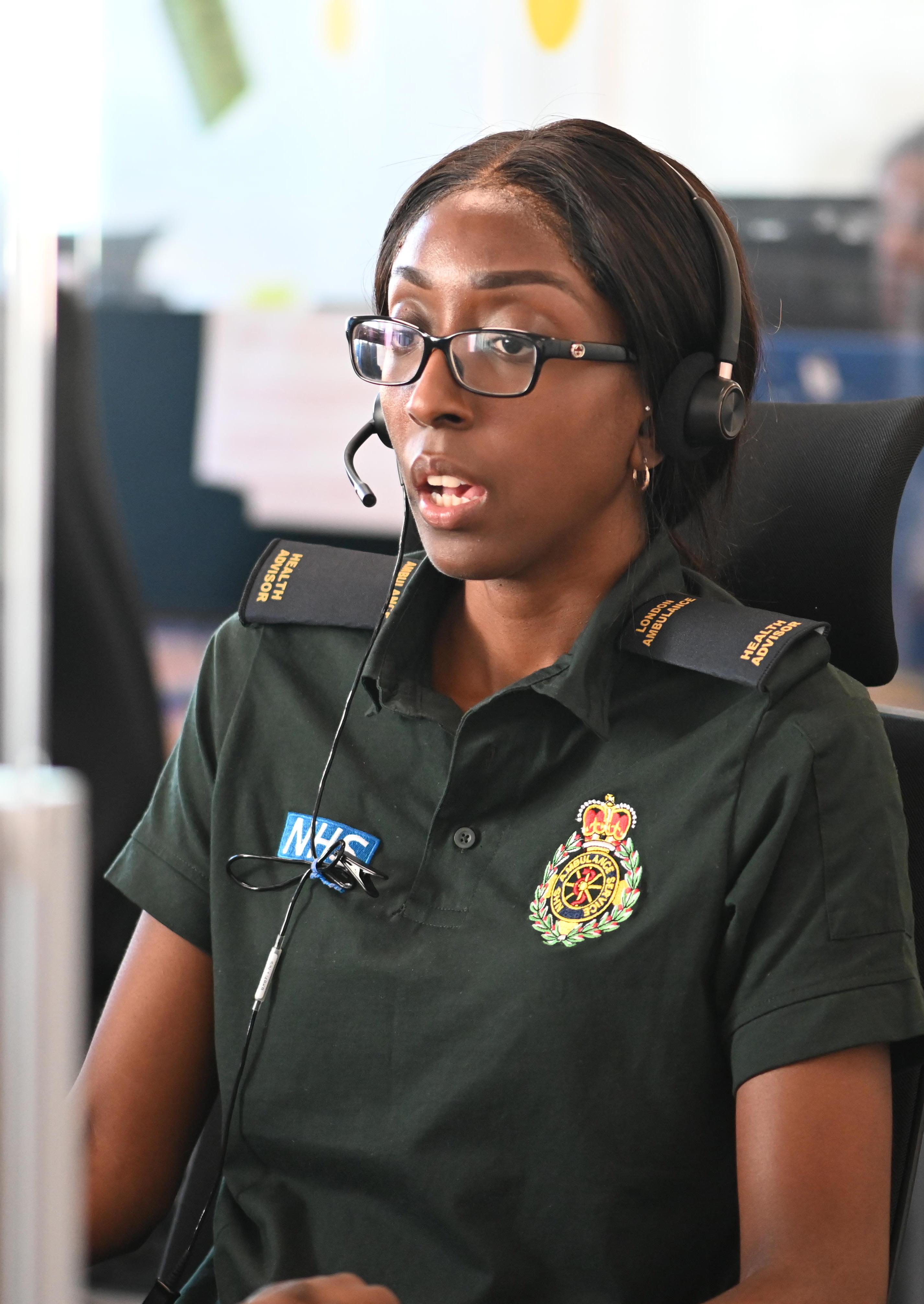
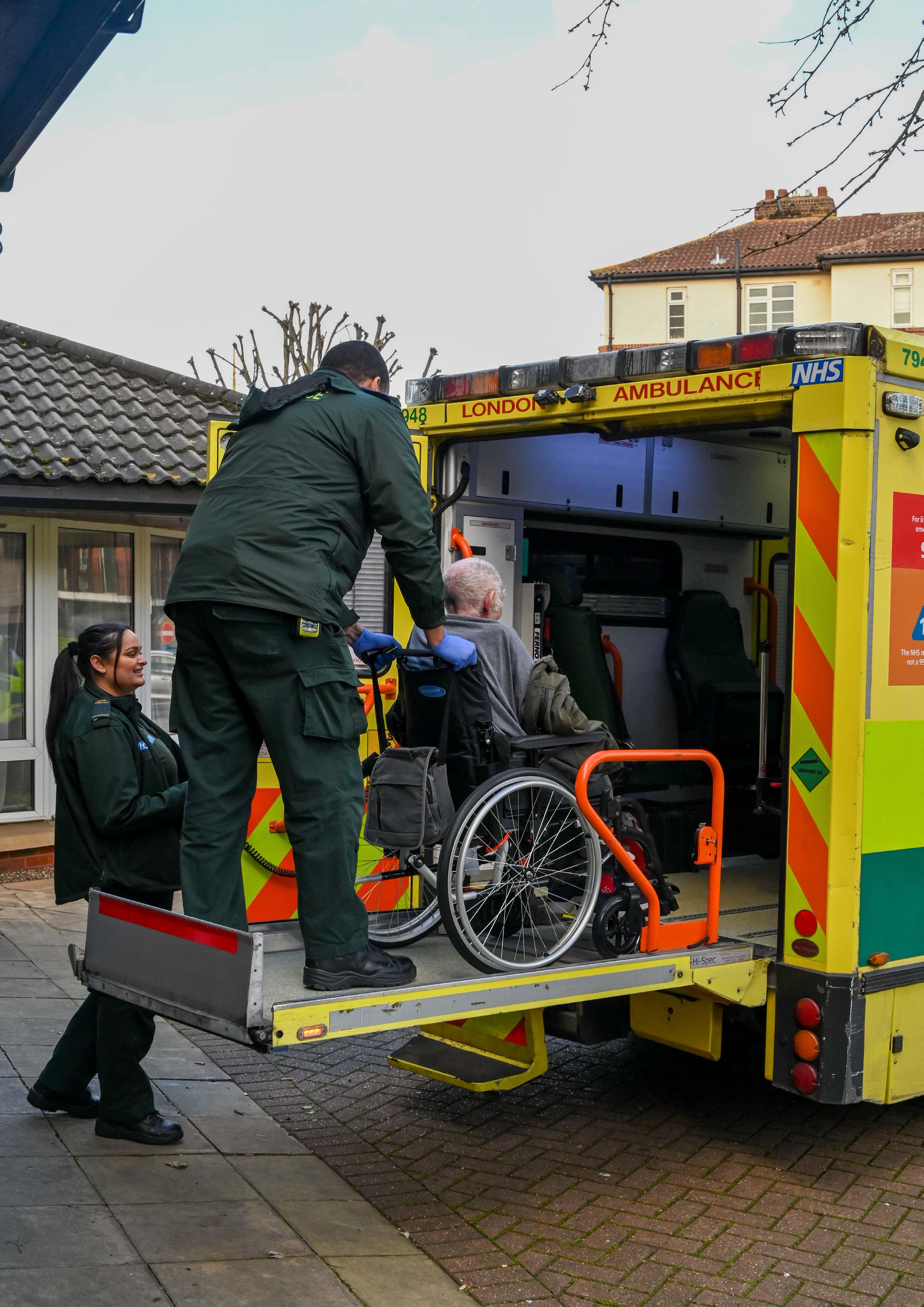
THIS YEAR WE COMPLETED 3 SAFEGUARDING AUDITS IN RELATION TO EMERGING THEMES AND AREAS OF INTEREST
•WELFARE REFERRALS AUDIT
•TRAINING FEEDBACK AUDIT
•LA456 AUDIT IN THIS REPORT WE WILL FOCUS ON TWO OF THESE AUDITS AND THEIR FINDINGS
Aim
To analyse and evaluate the quality of information gathered by LAS staff to communicate adult welfare concern to local authorities within London.
Hypothesis
It is predicted that there will be areas of improvement and learning identified specifically in regards to the quality of narrative to explain the reasons as to why a referral is needed. This takes into account local authority feedback shared with LAS.
Methodology
A retrospective audit was completed looking at welfare referrals sent to all London local authorities using the LA512/LA280. It was decided that all 32 local authority districts within Greater London would be included within the sample. Therefore a sample of 64 welfare referrals, encompassing all 32 Greater London boroughs was created by random selection. The time period looked at was within the last 3 months of the date of this audit August 2023, September 2023 and October 2023.
Conclusion
The findings from this audit support the hypothesis and evidence learning and improvement areas to better the quality of welfare referrals completed by LAS Staff. The key areas of focus is the quality of narrative and improving staff understanding of the type of information that needs to be documented and ensuring there is detail and evidence to support this.
Other areas of improvement relate to data collection to address health inequalities and the empowerment of patients. Again, raising awareness to help understand why this is information is important to collect would be beneficial to improve these figures
Overall referrals are being made appropriately using the correct method of referral and with consent for the right reasons. More detail is often required or is desirable to effectively communicate concerns for patient welfare and following this audit the Safeguarding Team will explore ways in which this is best achieved.
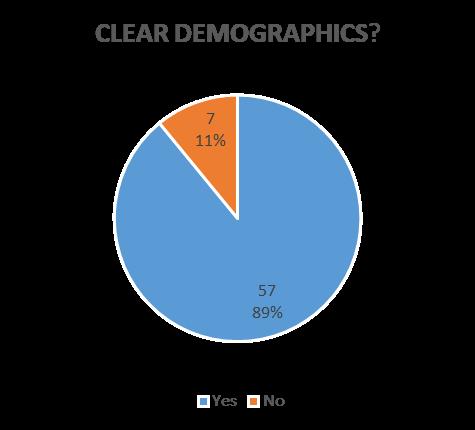
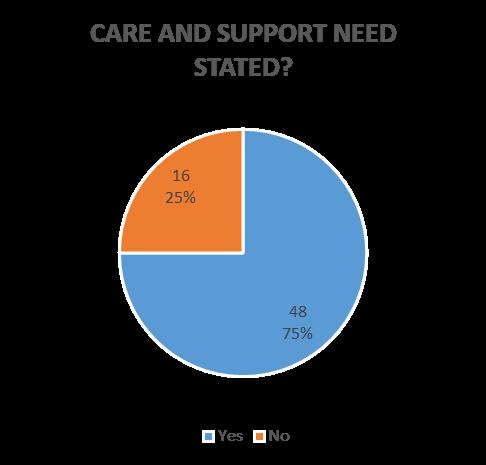
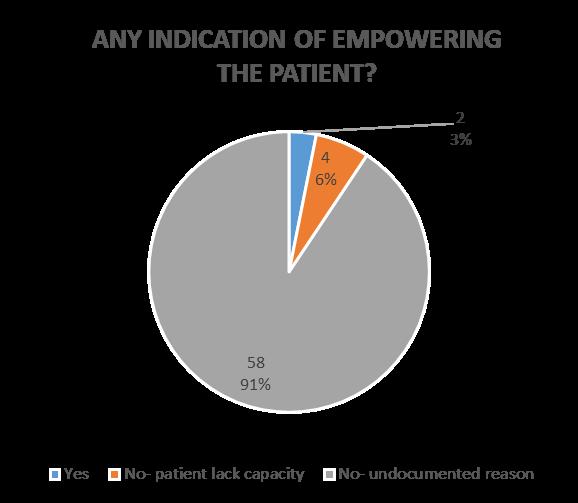

EXPLORE EFFECTIVE WAYS TO SHARE LEARNING
SPECIFICALLY TO IMPROVE QUALITY OF NARRATIVE
DETAILING THE REASONS WHY A REFERRAL IS NEEDED
DEVELOP WELFARE REFERRAL AUDIT TOOL CHECKLIST TO STANDARDISE AUDIT PROCESS COMPLETED BY AMENA CHOWDHURY
ASSESS IMPLEMENTATION OF LEARNING THROUGH FURTHER AUDIT IN THE NEXT FINANCIAL YEAR AGREED THAT THIS WILL BE AN ANNUAL AUDIT
IMPROVING ETHNICITY DATA THROUGH EDUCATION
AROUND IMPORTANCE OF COLLECTION DATA TO ADDRESS HEALTH INEQUALITIES
THIS IS A TRUST FOCUS IN RELATION TO HEALTH INEQUALITIES AND WILL BE INCLUDED IN REVISED LEVEL 3 TRAINING FOR 2025-27
INTRODUCE MANDATORY FIELDS TO WELFARE REFERRAL FORM, INCLUDING NEXT OF KIN INFORMATION, RELIGION AND WHERE APPROPRIATE TO AID QUALITY OF NARRATIVE OBJECTIVES
THIS IS BEING BUILT INTO THE LAS SAFEGUARDING E-REFERRAL DATASETS IN AUTUM 2024
Aim
To evaluate the quality of Safeguarding Training and provide assurance that training is meeting the needs of staff in order to develop knowledge, successfully identify and recognise safeguarding concerns and communicate concerns. To identify areas of improvement and learning
Hypothesis
With the learning implemented from the previous audit of training it is predicted that learner outcomes will improve and new areas of improvement will be identified.
Data has been collected through the use of Slido which provides a Q&A and polling platform integrated within both Level 2 & 3 training packages. All open text feedback has been reviewed and summary of most reported feedback included.
Conclusion
The results show an increase in the level of confidence in safeguarding knowledge, recognising and identifying a concern and communicating the concern across all levels of training delivered. The integration of live Q&A and polling has facilitated a marked increase in the level of feedback gained and has been received positively.
The incorporation of video, image and audio media has also been positively received leading to an increase in reports of engaging material. The results show the direct impact of training through pre and post training data. This provides assurance overall that the trusts Safeguarding training is meeting staff needs. To ensure effectiveness of training it would be beneficial to look at training effectiveness beyond the immediate feedback received to ensure that learning is fully embedded in practice.
Areas of improvement highlighted from the feedback: Safeguarding vs Welfare examples, more information on what happens after making a referral and how to make an effective safeguarding referral example. Feedback will continue to be monitored to ensure learning areas are identified.
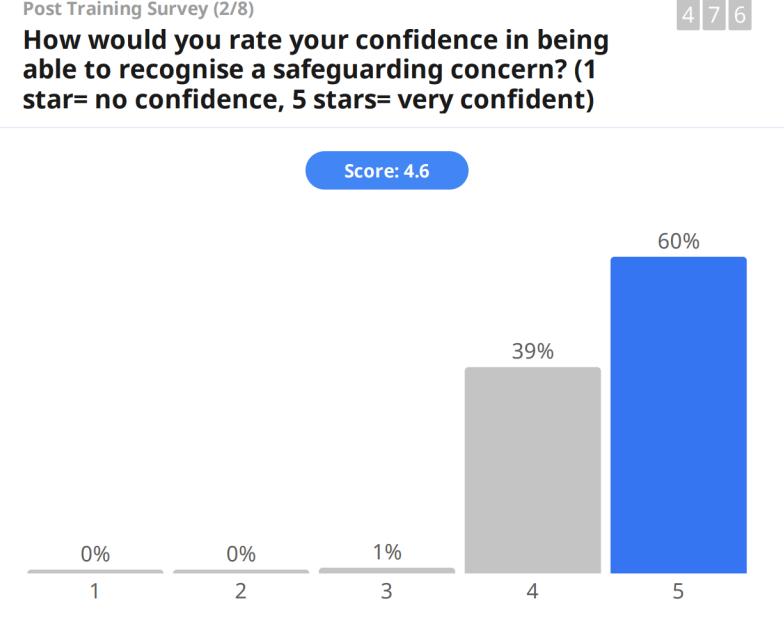

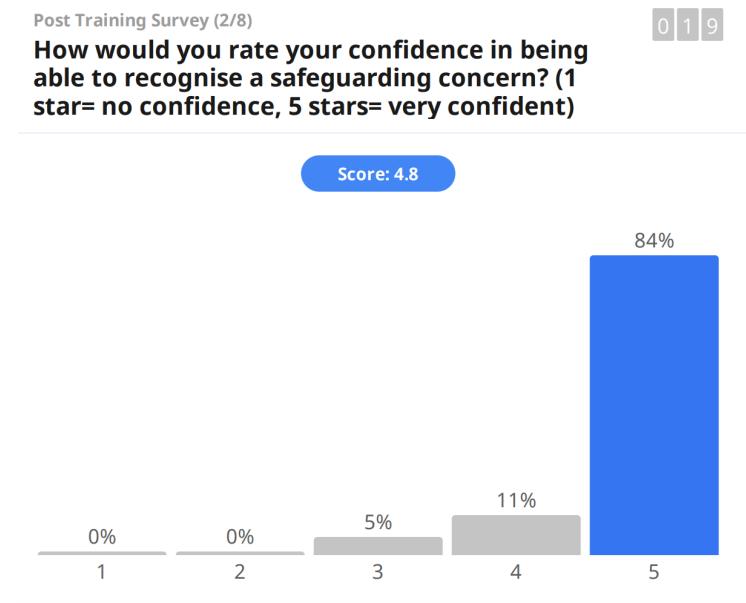

‘VERY WELL RUN COURSE. ALL MY COMMUNICATIONS WITH THE SAFEGAURDING TEAM HAVE BEEN INFORMATIVE AND USEFUL’
‘REALLY ENGAGING AND I REALLY LIKED THE USE OF REAL CASE EXAMPLES’
‘MORE EXAMPLES ON WHAT MAKES A GOOD SAFEGUARDING REFERRAL’
‘WOULD LIKE TO KNOW MORE ABOUT WHAT HAPPENS AFTER OUR REFERALS’
‘THANK YOU IT WAS VERY INFORMATIVE’
‘EXCELLANT PRESENTATION. ENGAGING EVEN OVER TEAMS!’
‘FANTASTIC SESSION AND REALLY WELL DELIVERED. I WOULD LIKE THE OPPORTUNITY TO SHADOW THE TEAM’
‘GREAT TRAINING MODULE. GOOD TO GET MORE DEPTH OF KNOWLEDGE IN RELATION TO SAFEGUARDING AND WELFARE’
‘I LIKE THE INTERACTIVE ASPECTS’
INCLUDE MORE INFORMATION AND CASE STUDIES ON DECISION MAKING WHEN CONSIDERING A SAFEGUARDING VS A WELFARE REFERRAL INTERACTIVE SESSION ON HOW TO MAKE AN EFFECTIVE SAFEGUARDING REFERRAL RECOMMENDATIONS
CONSIDER A 6 MONTH POST TRAINING QUESTIONNAIRE TO ENQUIRE HOW LEARNING HAS BEEN EMBEDDED INTO PRACTICE
LEVEL 3
TOTAL NUMBER OF STAFF TRAINED 65
89 COURSES PROVIDED, WITH 2225 SPACES AVALIABLE
PERCENTAGE 29.21%
39.32% OF COURSES CANCELLED DUE TO LOW NUMBERS
LEVEL 2
TOTAL NUMBER OF STAFF TRAINED 311
64 COURSES PROVIDED, WITH 1600 SPACES AVALIABLE
NEW RECRUIT TRAINING COURSES DELIVERED 52
STAFF TRAINED 761 LEVEL 3 BY SECTOR
LEVEL 2 BY SECTOR

Safeguarding can take many forms and is not just confined to the statutory process of referring children and adults at risk. Throughout the year our colleagues across the service do their bit to keep our communities safe and well. Here are just a few examples of that great work!
Delivered presents to an amazing 34 destinations in London last Christmas including Hospitals, children’s hospices, Social Services & Women’s /children refugees.
Delivering an estimated 3000 presents donated by staff. Lead by Nigel Flanagan Kings Ambulance Medal who has been leading this for over 10 years and has been rightly recognised for all his work.


Stephanie Fitzsimons, Bank Emergency Resource Dispatcher in EOC.
Stephanie recived her award for the work that she did supporting the White Chapel Mission for the homeless. This included a fundraising and winter coat drive. She was inspired to support the work of the White Chapel Mission following her experience of taking calls from homeless patients whislt working in our Emergency Operations Centre.
The Safety First Team deliver vital prevention education messages to year 8 secondary school pupils across all London boroughs.
LAS deliver sessions on the topics of:
• Choose Well - the importance of getting the right care at the right time
• Knife Crime
• Drugs and Alcohol

